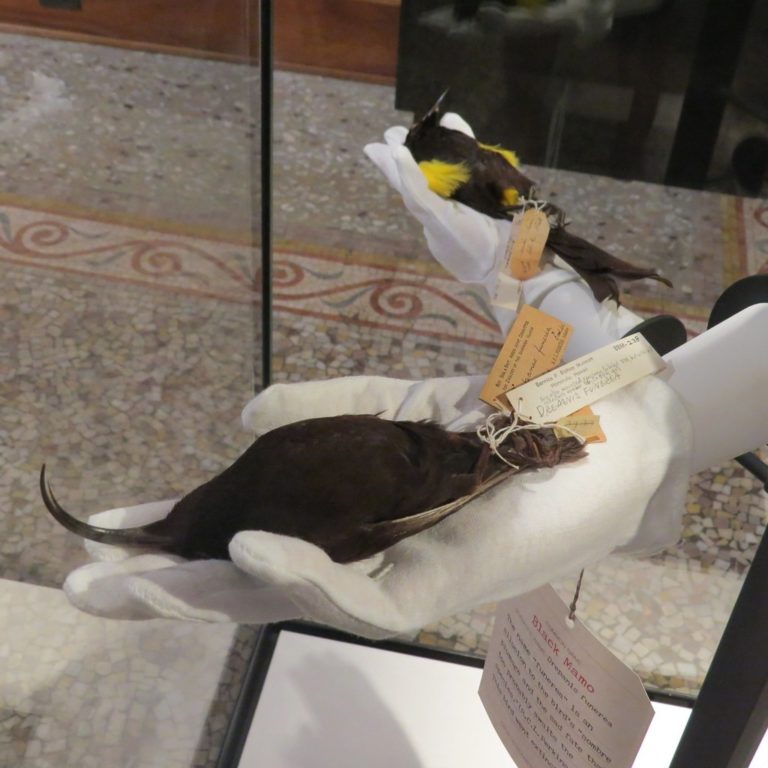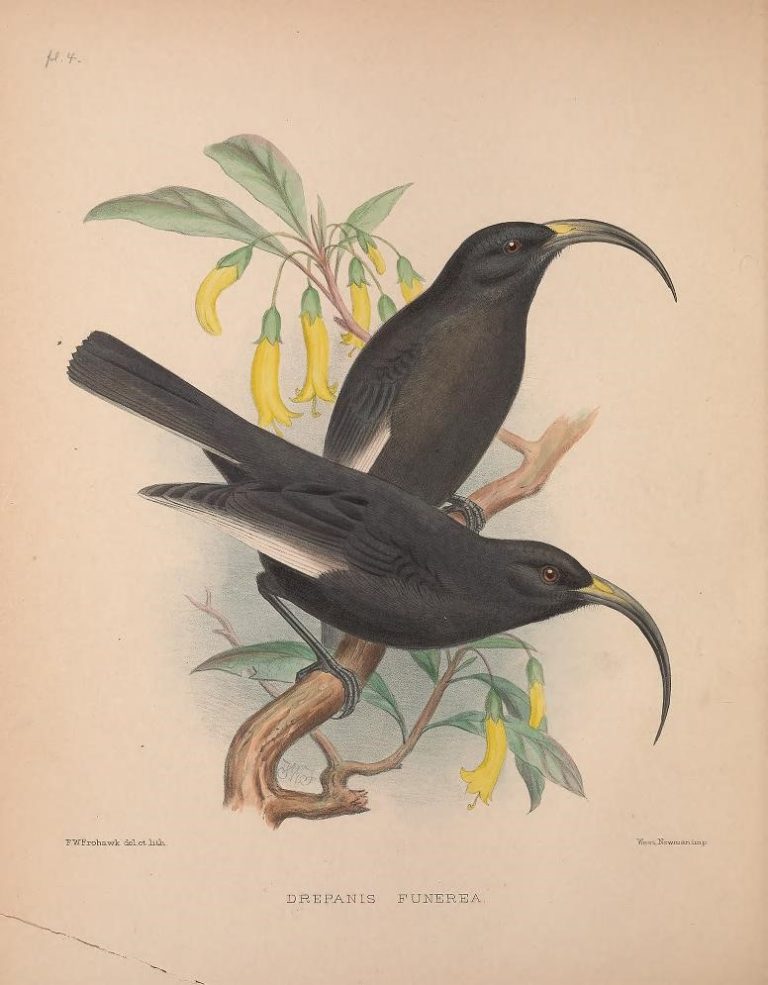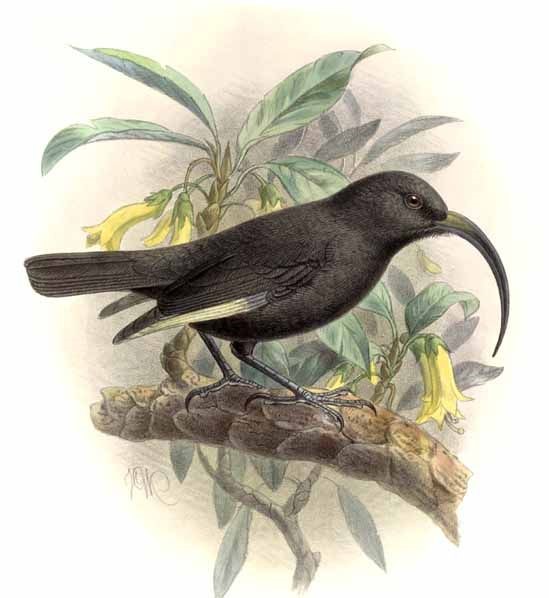Birdfinding.info ⇒ The last documented observation of Black Mamo was a specimen collected on June 7, 1907, at the heads of the Moanui and Waialua valleys in eastern Molokai. The species had been first collected fourteen years earlier, on June 18, 1893, and was always considered uncommon and apparently never seen anywhere except in the cloud forests of Molokai.
Black Mamo †
Drepanis funerea
Extinct. Formerly endemic to Molokai.
Fossilized remains have also been discovered on Maui.
Identification
A large black honeycreeper with an enormously long, sickle-shaped bill, and white primaries.

Black Mamo. (Specimen on display at Bernice Pauahi Bishop Museum; July 6, 2016.) © David Eickhoff

Black Mamo. © Frederick Frohawk, 1899
Notes
Monotypic species.
IUCN Red List Status: Extinct.
References
BirdLife International. 2016. Drepanis funerea. The IUCN Red List of Threatened Species 2016: e.T22720852A94686803. https://dx.doi.org/10.2305/IUCN.UK.2016-3.RLTS.T22720852A94686803.en. (Accessed May 26, 2020.)
Hume, J.P. 2017. Extinct Birds (Second Edition). Bloomsbury Publishing PLC, London.
Pratt, H.D. 2005. The Hawaiian Honeycreepers: Drepanidinae. Oxford University Press.
Pyle, R.L., and P. Pyle. 2017. The Birds of the Hawaiian Islands: Occurrence, History, Distribution, and Status. Version 2 (January 1, 2017). http://hbs.bishopmuseum.org/birds/rlp-monograph/. B.P. Bishop Museum, Honolulu, Hawaii.
